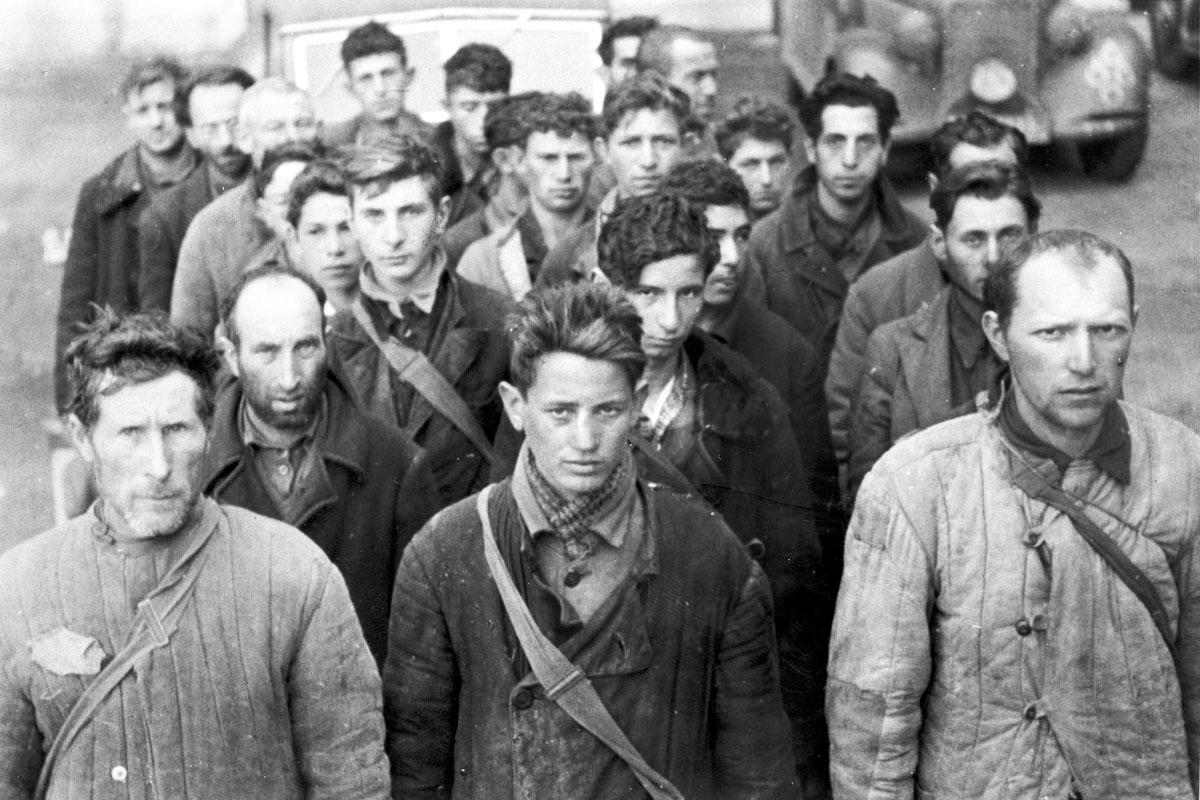Between the two world wars, some 71,000 Jews lived in Minsk. Many were active in the communist regime. In the 1920s, Minsk had Yiddish schools, a Yiddish theater, and Yiddish newspapers and publications. On the eve of World War II, the communist regime dismantled all the Jewish community institutions, outlawed Zionist activism, and forbade most Yiddish cultural and educational activity. After the occupation of western Poland by Germany in September 1939, thousands of Jewish refugees came to Minsk from Poland.
On 28 June 1941, days after the German invasion of the USSR, Minsk fell into German hands. Few Jews managed to escape eastward in advance of the occupation. All Jews practicing the free professions – 2,000-3,000 – were executed. Following a census, it was established that 75,000-85,000 Jews lived in Minsk to whom were added Jews from the surrounding towns, and the edict was issued to wear the Yellow Star.
A ghetto was established in Minsk in August 1941, and immediately afterwards, 5,000-15,000 men aged 15-45 were seized for "labor". Several months later, it transpired that they had been shot to death. Inside the ghetto, 2-3 families lived in each room. Thousands lived in houses without floors or windows, and the nutrition for the day consisted of 150 grams of bread and a portion of watery soup.
On 7 November, the Germans surrounded an area of the ghetto, forced out its inhabitants and shot them into pits. A similar Aktion took place on different streets on 20 November. Between 17,000-23,000 Jews were murdered in these two devastating events, which were designed to make space in the ghetto for Jews who had been deported from Germany, Austria and Czechoslovakia. In the winter of 1941-42, the ghetto inhabitants were stricken with starvation and epidemics. Dozens perished daily and were buried in mass graves.
By October 1942, some 9,500 Viennese Jews and some 19,000 from the Terezin ghetto arrived in Minsk. The majority were murdered in Maly Trostinets on arrival. Most were shot into pre-prepared pits, while others were murdered in gas vans on the way to Maly Trostinets. Just ten Jews from the Reich that were deported to Minsk survived the Holocaust.
Thousands of Jews were sent out to forced labor each day from the ghetto, working in factories, in industry and construction. In March 1942, 5,000-7,000 Jews were murdered in an Aktion. The Aktions continued in April and May. On 28 July, over 6,000 Jews from Minsk and over 3,000 German Jews were suffocated to death in gas vans, after being told that they were being driven to work.
11,000 Jews were left in the Minsk ghetto in August 1942. In the spring of 1943, the liquidation of the ghetto began. Initially, children, the elderly and hospital patients and their doctors were murdered. In June, the murder of the labor units began. In September, 3,000 Jews were sent to Lublin and to the Sobibor extermination camp, leaving some 2,000 Jews in the ghetto. On 21 October, they were put on trucks and taken to pits where they were shot. Afterwards, SS men searched the houses and hurled grenades inside to kill anyone still hiding there.
Thousands of Jews managed to escape from the ghetto to the forests. Some established partisan units, and in spring 1943, a family camp of about 650 Jews was set up in the Naliboki forest under the leadership of Shalom Zorin. Groups of children returned to the ghetto several times, including in October 1943, after the liquidation. With their help, some 90 Jews who had survived in hiding reached the camp in the forest. Altogether, some 10,000 Jews escaped to the forests from the Minsk ghetto, and almost half survived. When Minsk was liberated by the Red Army on 3 July 1944, 13 Jews emerged who had survived in hiding.
Yad Vashem Photo Archives, 4613/218







